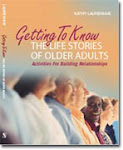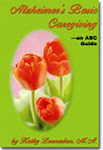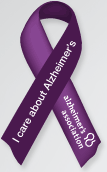The Alzheimer’s Store (http://www.alzstore.com/) is an outgrowth of architect Mark Warner’s comprehensive book, The Complete Guide to Alzheimer's Proofing Your Home. Through the store, he and his dedicated wife Ellen offer a wide variety of assistive devices, print resources and activity products. Mark has also written another book on safeguarding people with dementia who have a tendency to walk away from home, he produces the free Alzheimer's Daily News (http://www.alznews.org/) and he speaks and consults through his company Ageless Design, (http://www.agelessdesign.com/).
- To order The Complete Guide to Alzheimer's Proofing Your Home, click here.
Virginia Bell and David Troxel are the wonderful authors of a growing and enduring series of books which began with The Best Friends Approach to Alzheimer's Care in 1996. They are also delightful speakers and consultants. Check out their website at http://www.bestfriendsapproach.com/ or contact David directly at bestfriendsdavid@aol.com.
- To order The Best Friends Approach to Alzheimer’s Care, click here.
- To order The Best Friends Staff: Building a Culture of Care in Alzheimer’s Programs, click here.
- To order The Best Friends Book of Alzheimer’s Activities, Vol. 1, click here.
- To order The Best Friends Book of Alzheimer’s Activities, Vol. 2, click here.
Elizabeth C. (Betsy) Brawley is the author of two terrific books on environmental design for older adults: Designing for Alzheimer's Disease: Strategies for Creating Better Care Environments and Design Innovations for Aging and Alzheimer's. She is also an extremely knowledgeable consultant. You can reach her at Design Concepts Unlimited (Sausalito, CA) by calling 415-332-8382 or emailing her at betsybrawley@att.net.
- To order Design Innovations for Aging and Alzheimer’s, © 2006, click here.
- To order Designing for Alzheimer’s Disease, Strategies for Creating Better Care Environments, © 1997.To order click here.
Dan Kuhn, currently the education director for the Greater Illinois chapter of the Alzheimer’s Association, is the author of Alzheimer’s Early Stages: First Steps for Family, Friends and Caregivers, a terrific resource written with compassion and insight. Dan.Kuhn@alz.org.To order, click here.
Dorothy Seman has always been my moral compass in terms of how to treat people with dementia with dignity and the highest respect for both who they once were and still are. She is a co-author of Rethinking Alzheimer’s Care. Never miss an opportunity to read her work or hear her speak. Dorothy.Seman@med.va.gov. To order, click here.
Carol Sifton’s latest book is Navigating the Alzheimer's Journey: A Compass for Care-Giving. Like her previous book, it is both thorough (652 pages) and compassionate, filled with stories of real experiences with real people, and well-considered advice. Carol is also available for training and consulting. Call her at 902-634-3904 or email her at csifton@ns.sympatico.ca.
- To order Navigating the Alzheimer's Journey: A Compass for Care-Giving, © 2006, click here.
Joyce Simard is the author of The End-of-Life Namaste Care Program for People with Dementia. She chose the word “Namaste” because it means, “I honor the spirit within you,” which clearly suggests the compassion with which she approaches the dying process. However, Joyce is primarily a high-energy person with a laugh that tends to burst out easily. Therefore, her second book, The Magic Tape Recorder, was written as “Grandma Joyce” for children to explain how they can be helpful to people with dementia and other disabilities. With its delightful, full-color illustrations, it is probably a closer reflection of her personality. You can reach her at http://www.grandmajoyce.com/ or http://www.joycesimard.com/.
- To order The End-of-Life Namaste Care Program, click here.
- To order The Magic Tape Recorder, click here.
Karen Stobbe has long experience in the theatre and that has made her one of the most engaging and creative (read “fun”) Alzheimer’s trainers I know. Plus, she freely shares her ideas at http://www.in-themoment.com/. She is also the author of the short book, Sometimes Ya Gotta Laugh, in which she provides insights and advice gleaned from her father’s journey through Alzheimer’s disease. Contact her at karenstobbe@charter.net and enjoy.
Jitka Zgola is a woman of far-ranging talents (occupational therapist, inn-keeper, potter, to name just three) who has written several books, of which the most enduringly popular is Care That Works: A Relationship Approach to Persons with Dementia. It combines innovative, yet practical ideas with Jitka's whimsical art work. She can be reached at giverny@ns.sympatico.ca or by calling 902-928-2399. And check out her Nova Scotia Bed & Breakfast, pottery and other artwork at http://.singingpebbles.ca/. To order Care That Works, © 1999, click here.







